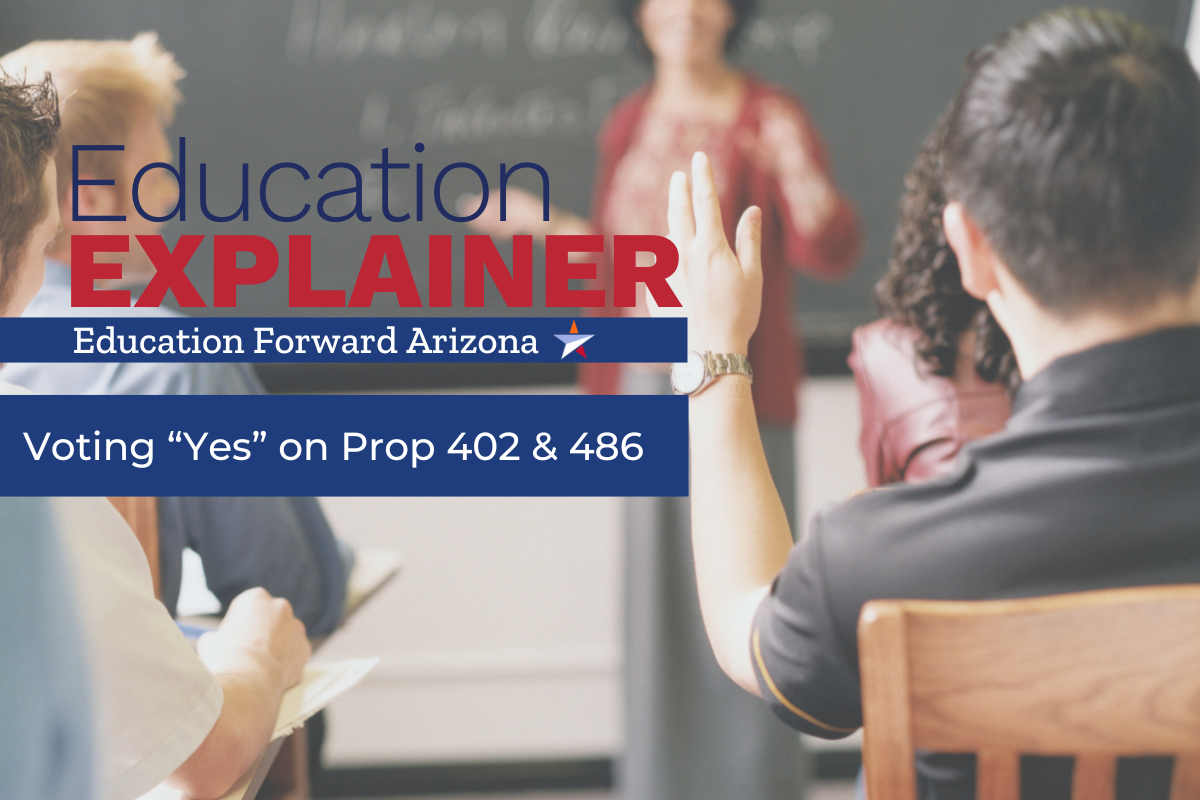
Understanding Arizona’s Community Colleges and the Importance of Passing Prop 402 & 486
Arizona’s community colleges are vital to our state’s economy and educational system. They offer affordable, high-quality programs that range from vocational training to academic transfer pathways. These colleges provide opportunities for people to gain the skills they need for in-demand jobs, contributing to Arizona’s economic growth and individual upward mobility. With ten community college districts across the state, they are essential engines for both education and workforce development.
Two community college districts in Arizona need voter support this November: the Maricopa County Community College District (MCCCD), which includes 10 colleges, and Eastern Arizona College (EAC) in Graham County. Both districts are asking for approval of propositions that will allow them to continue serving their communities effectively.
Education Forward Arizona encourages voters to vote YES on Propositions 402 and 486.

What are Proposition 402 and Proposition 486?
In November, Proposition 402 (Graham County) and Proposition 486 (Maricopa County) will ask voters to approve an adjustment to the Annual Expenditure Limit formula, by increasing the Base Limit that was originally set in 1980. This formula sets a cap on how much money community colleges can spend each year, even if they already have funds above that cap. A “Yes” vote on these propositions will update the formula to reflect current needs and allow the colleges to spend the revenue they already have without raising taxes. A “Yes” vote does not bring additional revenue, it simply allows the colleges to appropriately spend the resources they already have in order to continue to offer the programs that our workforce and community demand.

What is the Annual Expenditure Limit?
The Annual Expenditure Limit is the maximum amount a community college district can spend, even if they have more money available. This limit is based on a formula using figures from 1979-1980 and does not accurately reflect today’s costs. Propositions 402 and 486 are requesting to raise the limit by adjusting the Base Limit expenses; it is not a request to increase taxes.
The formula is calculated by multiplying three factors:
- Base Limit (1979/80 Expenses): The formula uses outdated spending data from over 40 years ago.
- FTSE (Full-Time Student Equivalent): This accounts for how many credit hours students are taking. Since many community college students are part-time, it takes two part-time students to equal one full-time student, but resources are still needed to support both.
- Inflation Factor: This adjusts for the rising cost of goods and services, but even this adjustment doesn’t fully reflect the actual costs community colleges face today.


Why Does This Adjustment Matter?
If the Base Limit from 1980 is adjusted, it will allow Maricopa Community Colleges and Eastern Arizona College to continue offering high-quality, affordable education without increasing taxes. With the additional spending flexibility, they can invest in:
- Hiring faculty and staff to meet the growing needs of students.
- Upgrading facilities and technology to better prepare students for the workforce.
- Expanding student support services like tutoring and career counseling, which are critical to student success.
A “Yes” vote would ensure that these colleges remain strong partners in Arizona’s goal to reach Achieve60AZ—having 60% of Arizonans earn a degree or credential by 2030.

What Happens if the Limit is Not Adjusted?
If the Base Limit is not adjusted, the consequences could be severe:
- Colleges that exceed the Expenditure Limit must pay a large fine to the state, causing colleges to spend resources that could have been used to benefit academic programs.
- Maricopa Community Colleges could face budget cuts of up to $100 million, which may result in program cuts, staff layoffs and even college closures
- Class sizes could increase, and student support services could decrease, making it harder for students to succeed.
- Innovative programs and partnerships with industries could be reduced, limiting opportunities for students to gain skills for in-demand jobs.
A “No” vote would significantly impact Arizona’s ability to meet its Achieve60AZ goals and hurt the state’s economic and social development. According to the “Billions to Gain” report, failing to increase educational attainment will result in lost economic opportunities for Arizona.

Will Taxes Go Up?
No. Approving these propositions and increasing the expenditure limit will not raise taxes. The propositions are seeking to change the Base Limit only. This will simply allow community colleges to spend the revenue they already have to meet modern demands. It does not lead to additional revenue or out-of-control spending—it only unlocks existing funds for vital needs.

Why Strong Community Colleges Matter for Arizona
Community colleges offer numerous benefits to students, communities, and the state as a whole:
- Affordability and Accessibility: Community colleges offer lower tuition than four-year universities, making higher education accessible to more people. This reduces income inequality and promotes upward mobility.
- Workforce Preparation: Many community college programs are designed to meet the needs of local industries. This ensures graduates are prepared for high-demand jobs, addressing workforce gaps and driving economic growth.
- Cultural and Intellectual Growth: Beyond job training, community colleges provide a diverse range of academic programs and host cultural events that enrich the lives of their students and the wider community. Their commitment to lifelong learning helps individuals stay competitive in an evolving job market.
Arizona’s community colleges are essential for building a strong, educated workforce and contributing to the state’s economic future. The Billions to Gain report shows that Arizona would benefit from $5 billion in gains per student cohort if postsecondary enrollment rates go up by 20%. A “Yes” vote on both Proposition 402 and Proposition 486 will ensure more Arizonans have the opportunity for a successful future.
Visit azcleanelections.gov for more information.
